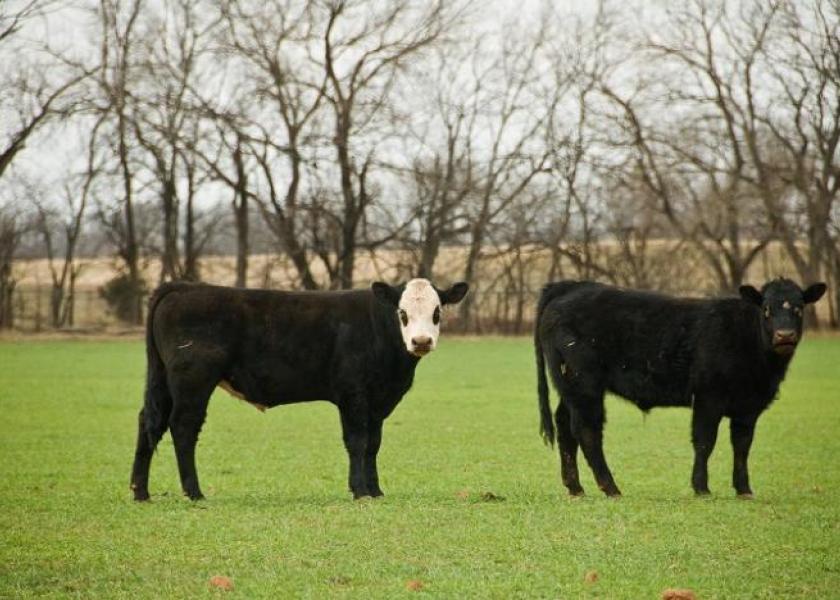Derrell Peel: Winter Wheat Grazing Revisited

The early winter storm in late October brought timely and much-needed rain to much of Oklahoma and sharply reduced drought conditions. The latest weekly Oklahoma Drought Monitor showed D0-D4 conditions of 26.13 percent, down from 52.06 percent the prior week. With much of the winter wheat crop planted (88 percent as of November 1) and emerged (71 percent), the crop responded quickly to the moisture. The latest Crop Progress report showed that Oklahoma wheat rated good to excellent jumped to 34 percent, up from 11 percent the prior week. The improvement in the wheat crop revived prospects for grazing winter wheat albeit with some delay.
Oklahoma feeder cattle markets jumped sharply last week from the low two weeks ago during the storm. Prices last week for steers weighing 450-600 pounds were the highest since late August/early September. For example, the combined Oklahoma auction average price for 450-500 pound, medium/large frame #1 steers was $166.89/cwt, compared to $147.34/cwt. the previous week.
The chart below shows current prices for feeder cattle in Oklahoma auctions. The market is quite different for animals below and above 600 pounds. For animals below 600 pounds, the price drops sharply with additional weight (i.e. a bigger price rollback). Above 600 pounds, the price changes little with additional weight. A bigger price rollback reduces the value of gain. For example, the value of gain for 200 pounds of gain from 450 to 650 pounds is $0.62/lb. but for 650 to 850 pounds, the value of gain is $1.36/cwt.

This price pattern suggests that stocker producers will want to consider several factors including beginning weight, how long the animals will be owned and how much gain will be added to the animals. With a possibly shortened winter grazing period, a heavier beginning weight currently offers a higher value of gain and may make sense.
The next few weeks may result in additional demand for stockers but will likely also see larger supplies of feeder cattle in Oklahoma auctions. Combined Oklahoma auction volume the past six weeks has been down nearly 33 percent, in part due to the impacts of the winter storm. It appears there are significant numbers of calves and feeders yet to be marketed this fall. Stocker and feeder prices could move either higher or lower in the next month depending on the balance of increased demand and increased supply in auctions.
Another factor that is helping support cash feeder cattle prices is the current strength in Feeder futures. Winter grazing typically keys off the March Feeder futures contract. March contract prices increased to over $135/cwt. at the end of last week, up from lows below $126/cwt. less than two weeks ago. Feeder markets are also closely watching feed grain markets as strong export demand has pushed grain prices higher.
Winter grazing stocker budgets are very dynamic and should be evaluated carefully. Purchase prices are volatile and somewhat uncertain in the coming weeks. Expected sales price are also uncertain, at least as far as volatility in March Feeder futures is an indication. Opportunities for purchase prices, risk management and establishing expected fixed or minimum sales prices may be fleeting given the volatility in cattle and feed markets.







